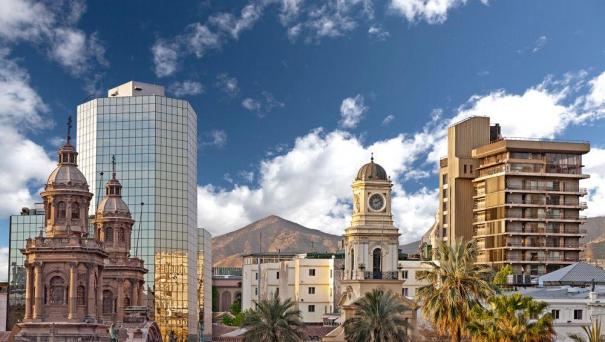About Santiago
Santiago, Chile’s capital and largest city, sits in a valley surrounded by the snow-capped Andes and the Chilean Coastal Range. Plaza de Armas, the grand heart of the city’s old colonial core, is home to 2 neoclassical landmarks: the early-19th-century Royal Court Palace, which houses the National History Museum, and the 18th-century Metropolitan Cathedral. Barrio Brasil and bohemian Barrio Bellavista offer lively nightlife. Founded in 1541, Santiago has been the capital city of Chile since colonial times. The population of Santiago was 5,145,599 based on a census from 1009. The climate produces warm dry summers (November to March) with temperatures reaching up to 35 °C (95 °F) on the hottest days; winters (June to August) are more humid with cold mornings; typical daily maximum temperatures of 13 °C (55 °F), and minimums of a few degrees above freezing. Santiago air is the most polluted in Chile. Within the metropolitan area of Santiago, there are 174 heritage sites in the custody of the National Monuments Council, among which are archaeological, architectural and historical monuments. Santiago has many places of entertainment catering for all ages and tastes from amusement parks to opera and ballet.
